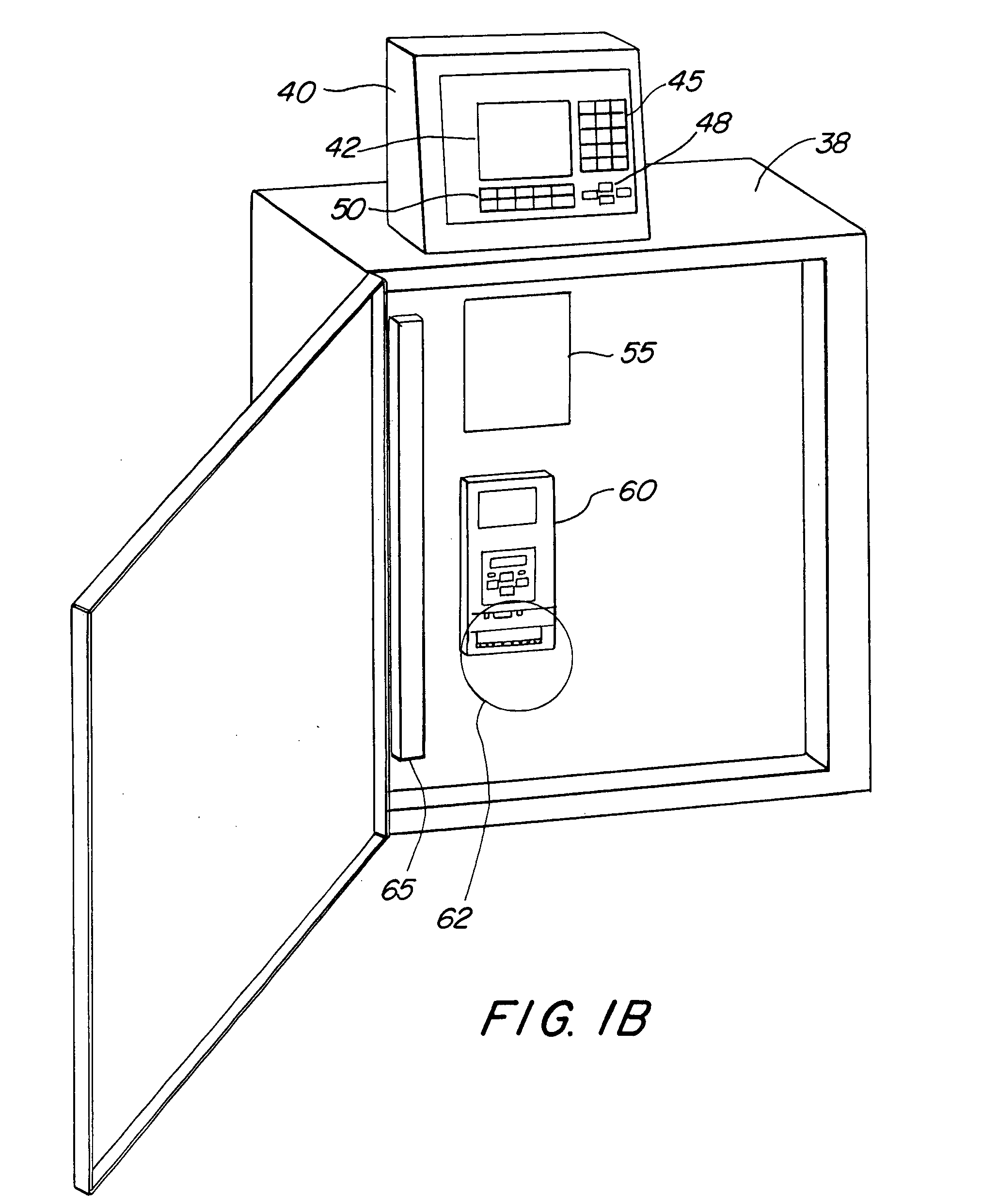Single sensor press system
- Summary
- Abstract
- Description
- Claims
- Application Information
AI Technical Summary
Benefits of technology
Problems solved by technology
Method used
Image
Examples
Embodiment Construction
[0037]FIG. 1A is a perspective view of a tortilla press 10 incorporating a single sensor 14 into the system of the instant invention. The tortilla press 10 has a belt 18 for moving tortillas through the press. The belt has detectible elements 16 along one edge. The sensor 14 is aligned with the detectible elements 16 so that, as the belt moves, the detectible elements pass by the sensor 14. While the sensor may be any of a variety of sensors available, in the preferred embodiment, sensor 14 is an optical sensor. This optical sensor 14 is capable of detecting colors. One such sensor is provided by Banner Engineering Corp. and is a BANNER MINI BEAM SME312FDQD with a fiber optic line BTA26S.
[0038] The belt 18 is driven by a motor 22. The motor drives the belt 18 via a gearbox 25. The motor 22 may be any of a variety of motors available on the market. However, the motor of a preferred embodiment is an inverter-grade motor. One such motor is provided by Nord and is a Fremdlufter EF71. T...
PUM
 Login to View More
Login to View More Abstract
Description
Claims
Application Information
 Login to View More
Login to View More - R&D
- Intellectual Property
- Life Sciences
- Materials
- Tech Scout
- Unparalleled Data Quality
- Higher Quality Content
- 60% Fewer Hallucinations
Browse by: Latest US Patents, China's latest patents, Technical Efficacy Thesaurus, Application Domain, Technology Topic, Popular Technical Reports.
© 2025 PatSnap. All rights reserved.Legal|Privacy policy|Modern Slavery Act Transparency Statement|Sitemap|About US| Contact US: help@patsnap.com



